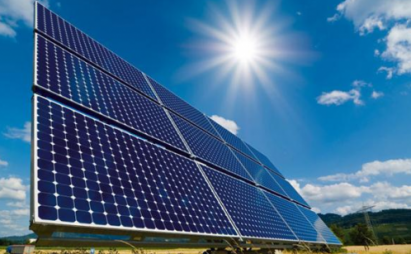When Leandro Leviste studied at Yale University, he heard about Elon Musk’s designs for Solarcity. Leviste had bought stocks in Tesla, Musk’s electric car brand, when they were cheap and sold them for $200 apiece at just the right time. Now he wants to cash in again: follow Musk’s mission by building the Philippine equivalent of Solarcity, which is an American company that installs solar panel systems on buildings and owns capacity to make the panels.
The 23-year-old founder of Solar Philippines has spent $100 million dollars in bank loans arranged through family connections as well as his Tesla profits to build solar “farms” and rooftop panel systems. The company provides solar power in Leviste’s homeland the Philippines, a Southeast Asian archipelago of 102 million people.
Leviste says he got into it because Filipinos pay some of Asia’s highest electricity rates but shouldn’t. Existing power providers have rigged it that way, the founder believes. The high rates contribute to poverty, an issue for 22% of the Philippine population, and deter foreign companies from investing in a country that’s otherwise on the move economically, he adds. He suspects that foreign manufacturers such as Intel INTC +0.25% and Ford Motor F -0.07% Co. left the Philippines in part because electricity rates were raising production costs.
“Solar has gone down so far in cost it’s even cheaper than coal,” Leviste said on the sidelines of the Forbes Under 30 Summit in Singapore last week. Rates for solar energy can go lower than the mainstream source coal by at least $0.02 in part because of the country’s regular sunny weather, he says. “Solar is cheaper than coal in the Philippines,” he gripes. “Why no one else is talking about that is beyond me.”

It’s not really beyond him. The government had offered solar energy subsidies with a deadline of March, creating what he describes as a “gold rush” that became a “ghost town” after subsidy-driven projects were done and the money disbursed. Solar Philippines is aggressively pursuing solar power now as most other wait for another round of subsidies that might not come, Leviste says.
His chief peer so far, dominant Philippine electricity provider Meralco, has developed a proof-of-concept lab for solar energy. It’s also exploring renewable energy partnerships in the Philippines and abroad because it expects growth.
Philippine electricity rates are among the highest in Asia due to lack of government subsidies and steep production costs (65% of your electric bill, local media say), which Leviste imagines comes from excess rent charged by power distributors to producers. Power outages are still annoyingly common outside Manila, prompting the economic development-wary government to push for more capacity ahead of a projected nationwide demand of 29,300 megawatts by 2030.
The crush to meet that demand has gone 80% to coal, Leviste laments. “We’re the country that’s adding the most coal to its energy supply in Asia,” Leviste says. “We should stop all these plants and use solar.”
The Solarcity concept has driven him to do exactly that. What started out three years ago as installation of solar energy systems on top of a few Manila mega malls grew into a 63 megawatt, $140 million solar farm that opened two months ago in Batangas province near the capital. Solar Philippines will add three more farms by year’s end for total nationwide capacity of 250 megawatts, the founder anticipates, enough to “sell by next year into a listed vehicle.” The founder insists he could provide 1,000 to 2,000 within two years from solar energy. Like Solarcity, Solar Philippines may someday own capacity to makes solar panels.
The fate of Solar Philippines may hinges on whether consumers mind the “intermittent nature of renewable energy” and how well it can penetrate islands dependent now on expensive diesel generators, says Jonathan Ravelas, chief market strategist with Banco de Oro UniBank in metro Manila. “The aspiration is admirable,” Ravelas says. “In the near term we are unlikely to see an energy portfolio that will comprise entirely of renewable energy technologies. With that said, the drop in solar PV prices and the improvement in battery storage technologies bode well for solar.”
The idea more than bodes well for the Solar Philippines founder.
“It’s such a revolutionary thing it’s not going to be just part of the energy supply but 100% of it,” Leviste says. “I just always think that anything is possible. Older people always tell me things can’t be done. The world is different now and pigs can fly.”

Comments are closed.